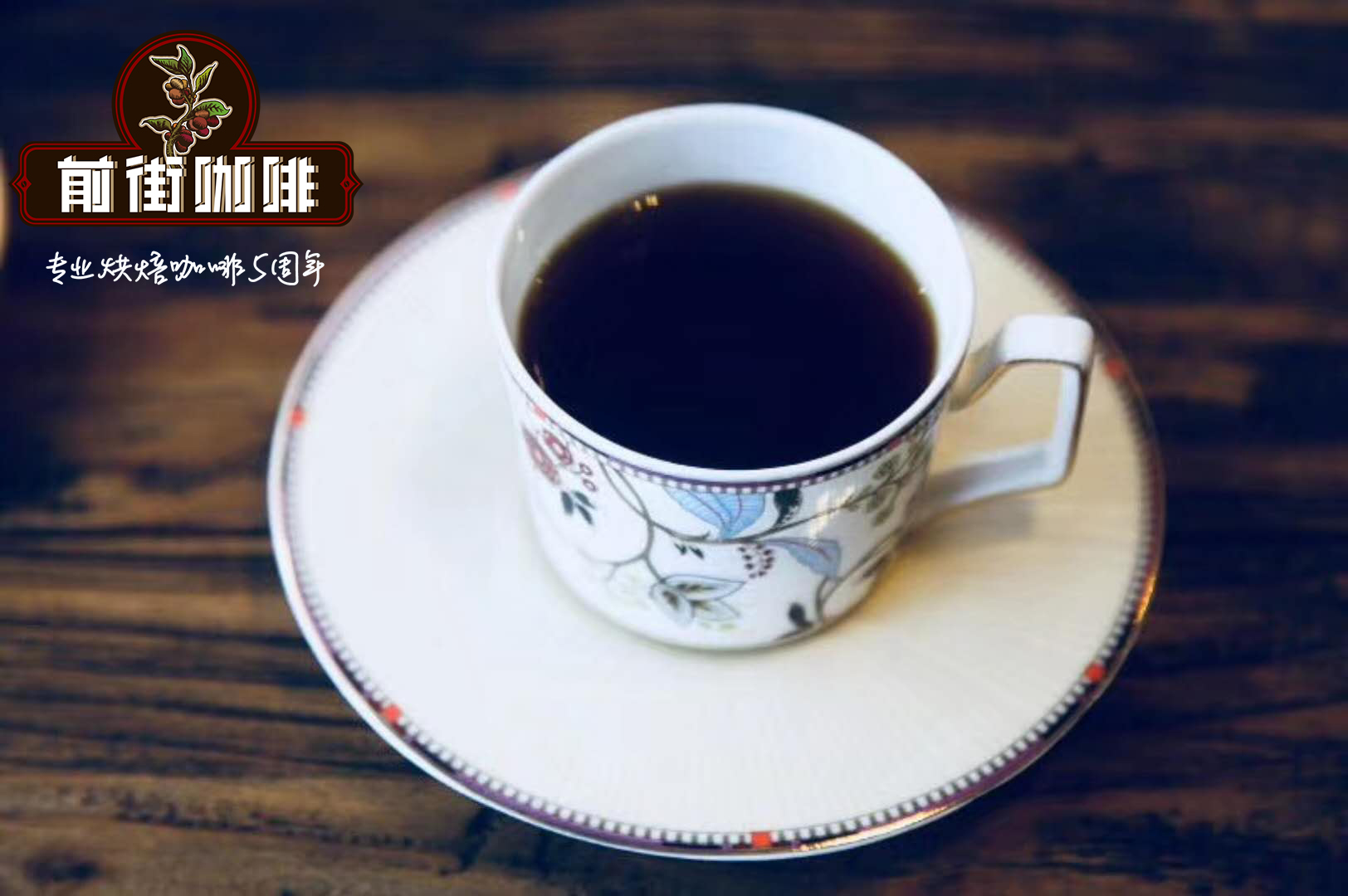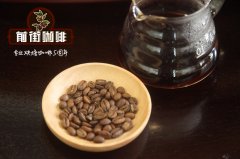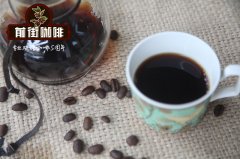How does the baker bake Sakuran? How to adjust the baking curve of Sakuran?

Professional coffee knowledge exchange more coffee bean information please follow the coffee workshop (Wechat official account cafe_style)
In the words of the baker, how to bake Sakuran? How to adjust the baking curve?
Recently, we like a bean very much, [Sakuran]
Then how did Sakuran's name come from?
In 2017, Ethiopia's DW Raw Bean Company sent their coffee beans to TOH (the Taste Of Harvest), a competition hosted by the African Coffee Association, and the tanning batch won the championship of TOH Ethiopia. This batch of raw beans, in the capacity of the champion, is named "Sakuran".
Sakuran, located in Hambella, Humbera is in GUJI, the largest coffee producing area in Ethiopia, and the administration belongs to the state of Oromia. Hambella is the highest coffee producing area in Ethiopia (Harrar is the highest in Ethiopia), facing the west and kochore across the mountain, and connecting with the shakiso,Uraga and Kerchaz producing areas of Guji in the east and south respectively.
At present, there are about 20 processing plants of various sizes in Hambella producing areas. Dimtu, the core production area of Hambella of DW Company, has four manor processing plants, namely "Buku abel", "Buku saysay", "Haro soresa" and "Tirtiro Goye".
"good coffee is hard to come by": in the mountains above 2000 meters above sea level
Most of the coffee farms in Ethiopia are still in the original state, and the local farmers just go to the mountains to pick, choosing only all red fruits, fully ripe coffee cherries, all manual picking, African scaffolding to dry, limit the thickness of the fruit layer and turn it 24 hours a day, to ensure uniform sun exposure and ventilation, and to more accurately grasp the degree of fermentation. most local treatment plants also use the original sun treatment. According to experience, fermentation and drying, so the quality is very unstable.
Red brown organic soil, annual rainfall more than 1200mm, altitude, temperature difference between day and night, manual picking of pure red fruit and low temperature fermentation under the unique natural environment of the manor.
The plots where red fruits are harvested are more concentrated, and the new treatment fields are closer, which can ensure that red fruits can be collected and disposed of as quickly as possible. The whole treatment process is only managed more finely under the guidance of scientific measuring instruments, and there is no improved process that "breaks the tradition". The red fructose content is more than 21 before the sun treatment begins, so the sweetness is quite high.
In order to prevent sudden rain at night, it will be wrapped in thick plastic sheeting. In this way, the red fruit is fermented and dehydrated at a lower temperature. After 18 days of sun treatment, when the moisture content of raw coffee beans is reduced to about 13%, stop sun treatment, put it in sacks, put it in the warehouse under natural conditions of 12-22 degrees Celsius and 40-50% humidity, raise raw beans and further dehydrate for about 50 days.
According to the baker, when we get such a good bean [Sakuran], how do we bake it, and how do we adjust the curve?
First of all, I will look at the flavor description provided by the raw bean merchant, and then look at the moisture content of the bean. The raw bean I just got has the fermented wine smell of coffee flowers, which is completely different from the grass flavor of the general raw bean. Moreover, Sakuisheng beans of different sizes, and more tip of the head and tail (Ethiopia Heirloon Ethiopian original species), the moisture content is good, about 11%, but not the kind of SHB beans with high hardness, because of the high density and high hardness of beans, the dehydration time was lengthened before an explosion, and the loss of small molecules such as floral fragrance was retained as far as possible.
As the usual production requires me to choose a baking capacity of 550g (full load) into beans to share my experience:
Bean temperature: 190 degrees
Adjust the curve only by changing the bean temperature and development time:
The first pot: turn yellow point: 150.3 degrees, 5 minutes 55 seconds, 196 pot explosion development 1 minute 40 seconds, one explosion point at 9 degrees 39 percent 55
The second pot: turn yellow point: 151 degrees, 5 minutes 51 seconds, 193 pot explosion development 1 minute 30 seconds, one explosion point at 9 degrees 39 percent 50
The results of the cup test are as follows:
The first furnace: the wet fragrance has a strong aroma of green tea and flowers. Sipping aromas of green tea, jasmine, lime and sugar. The palate is light and clean, with soft and fresh acidity. But the end rhyme is not enough, only some sweetness remains in the mouth. However, it tastes very unbearable, like drinking a cup of tea instead of coffee.
The second pot: the wet fragrance has yellow lemon, flower fragrance, black tea fragrance and citrus flavor. There are aromas of black tea, yellow lemon, caramel and jasmine when sipped. At this baking degree, the flavor begins to become rich and solid, the entrance acidity is more elegant, sweetness will be perceived faster, sweetness will be higher, fermented wine, cream, tropical fruits, jackfruit, more balanced.
After baking and correction, I use the Taiwan Yang family 800N machine, after the cup test, finally determine the line 2, I am more satisfied with the curve:
190 degrees into the beans, nearly 6 minutes to complete dehydration and yellowing. (the yellow point is about 150-153 degrees)
The explosion began in more than 50 minutes (the explosion of Huakui is later than that of ordinary beans, and the explosion sound is very weak)
After an explosion, it is recommended that the development time should not exceed 1 minute and 30 seconds, nor less than 1 minute. (it is recommended to open the throttle to reduce the fire to control the speed.)
Sample spoon smell, about 193 degrees can smell strawberry jam, can be out of the pot beans
It is better to control the overall time within 11 minutes.
Cooking method
As for the way of brewing, hand brewing and siphon brewing are the best. When you grind the beans, you can smell the sweet smell of the sun fruit.
Gentle and delicate, sweet and lovely. Yega Chuefei exudes an extremely complex aroma and shows an extremely excellent taste that is difficult to describe.
Cake WAVE filter cup, 15g powder, water temperature 89 degrees, grinding 3.5C
The ratio of water to powder is close to 1:15
Steaming in 30 grams of water for 35 seconds
Segment: 30,10590, time is 2:03 (steaming starts)
Palate: smooth, layered, sweet fermented berries
The taste of the wet ripe berry fruit fermented wine is amazing, the entrance is extremely smooth, to the delicate mellow thickness, the sour and sweet appearance of the ripe fruit is really amazing, the sweet feeling is outstanding, clean, the finish rhyme performance is also quite good.
Important Notice :
前街咖啡 FrontStreet Coffee has moved to new addredd:
FrontStreet Coffee Address: 315,Donghua East Road,GuangZhou
Tel:020 38364473
- Prev

Are you worried about heart palpitations, insomnia, or switching to decaf coffee because of pregnancy?
Professional coffee knowledge exchange More coffee bean information Please pay attention to coffee workshop (Weixin Official Accounts cafe_style) Fear of insomnia, palpitations, drinking decaffeinated coffee is healthier? Are you worried about heart palpitations, insomnia, or switching to decaf coffee because of pregnancy? Drinking coffee to reduce caffeine intake, in fact, with coffee bean varieties, grinding particles large
- Next

Introduction of sun-dried beans in Minas-Aurea Manor, Brazil what are the shallow baking and deep baking
Professional coffee knowledge exchange more coffee bean information please follow the words of the roaster in the coffee workshop (Wechat official account cafe_style), how to bake Sakuran? How to adjust the baking curve? Recently, we like a bean very much. How did Sakuran get its name? In 2017, Ethiopia's DW raw bean company delivered their coffee beans.
Related
- Beginners will see the "Coffee pull flower" guide!
- What is the difference between ice blog purified milk and ordinary milk coffee?
- Why is the Philippines the largest producer of crops in Liberia?
- For coffee extraction, should the fine powder be retained?
- How does extracted espresso fill pressed powder? How much strength does it take to press the powder?
- How to make jasmine cold extract coffee? Is the jasmine + latte good?
- Will this little toy really make the coffee taste better? How does Lily Drip affect coffee extraction?
- Will the action of slapping the filter cup also affect coffee extraction?
- What's the difference between powder-to-water ratio and powder-to-liquid ratio?
- What is the Ethiopian local species? What does it have to do with Heirloom native species?

